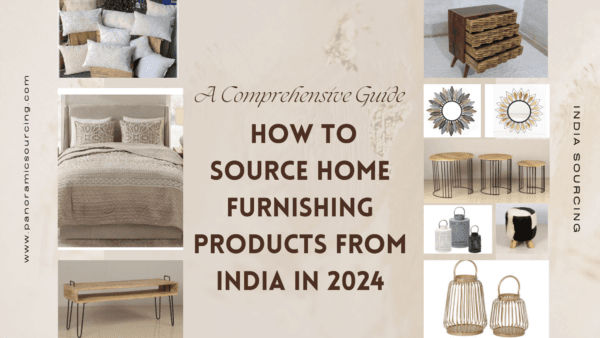Getting home furnishing stuff from India can be fun because they are really good at making things and have lots of different stuff to offer. Let me break it down for you. First, figure out exactly what you want – like, do you want soft fabrics, furniture, or cool decorations? Then, look online or go to events where you can find companies from India. Make sure these companies are good and check out their factories if you can. Talk about the price and how you’ll pay them. Also, ask for samples to see if you like their stuff. Once everything is set, talk about how the things will get to you. Keep in touch with them, and if everything goes well, you might have a long-term friend in the home furnishing game. You can also refer to our ultimate guide to wholesale home decor manufacturers and suppliers in India to streamline your sourcing process.
Step 1: Define Your Requirements
In the initial step of defining your requirements for sourcing home furnishing products from India, it’s crucial to meticulously outline your specific needs. Whether you’re in search of textiles, furniture, décor items, or a harmonious combination of these, precision is key. Specify the materials you desire, whether it’s plush fabrics, sustainable wood, or intricately designed metalwork. Consider the sizes and dimensions that align with your market or personal preferences. Delve into the nuances of design, highlighting elements that resonate with your aesthetic vision. By leaving no detail unaddressed, you not only streamline the supplier search but also ensure that the end products align seamlessly with your expectations, creating a foundation for a successful sourcing journey.
Step 2: Research and Identify Suppliers
- Online Directories:
Start by checking out online directories. Think of them like huge online catalogs. Platforms such as Alibaba, IndiaMART, and TradeIndia are your go-to spots. - Trade Shows:
Imagine a big party where everyone who’s into home furnishings is invited. Trade shows like Heimtextil India, Index, and Ambiente India are great places to see, touch, and talk about products. You can also explore our guide to sourcing copper bottles from India for specialty items. - Local Chambers of Commerce:
Think of them as business matchmakers. They can introduce you to reliable suppliers and help you get started.
Step 3: Verify Supplier Credentials
- Background Check:
Look for reviews and testimonials. A good reputation is a strong indicator. - Visit Manufacturing Facilities:
Visit their facilities if you can. It helps ensure they can meet your standards and capacity needs. - Check Certifications:
Look for certificates like ISO or BSCI. These ensure quality and ethical standards. Understanding top products to source from India in 2025 can help prioritize which certifications matter most.
Step 4: Negotiate Terms and Conditions
- Pricing:
Negotiate based on volume and clarify shipping, tax, and customs costs. - Sample Orders:
Request product samples to assess quality, design, and craftsmanship. - Payment Terms:
Discuss fair payment terms. Consider using escrow services for added security.
Step 5: Logistics and Shipping
- Shipping Methods:
Choose between air (fast, costly) and sea freight (slower, economical) based on your needs. - Customs and Import Regulations:
Understand your country’s import duties and regulations. Hire a customs broker if needed. Consulting a sourcing agent can simplify this step.
Step 6: Build a Long-Term Relationship
- Communication:
Stay in regular contact to monitor progress and resolve any issues early. - Feedback:
Offer constructive feedback on samples and initial orders to improve future collaboration. - Repeat Orders:
Maintain the relationship with consistent orders and explore customization opportunities. You can unlock benefits with a sourcing agency in India to enhance long-term partnerships.
Step 7: Legal Considerations
- Contracts:
Create detailed contracts specifying terms, timelines, and deliverables. - Intellectual Property:
Protect your designs and ideas with IP agreements to avoid misuse or duplication.
By following these steps, you can navigate the process of sourcing home furnishing products from India successfully. Remember that building strong relationships with suppliers is key to long-term success in international sourcing.

Written by Ajit Jha
Panoramic Sourcing
Ajit Jha is the co-founder of Panoramic Sourcing and leads the Quality Department. With over 25 years of experience, he has worked with a wide range of international buyers to ensure product quality, compliance, and smooth sourcing from India. Ajit is known for his hands-on approach and sharp eye for detail.













